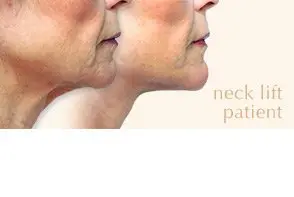Tummy Tuck
Abdominoplasty in Asheville, North Carolina
Have you done everything right to get a flat, smooth and toned abdomen only to find that a healthy diet and exercise have done nothing to improve sagging skin and protruding muscles? An Asheville tummy tuck with plastic surgeon Donald Conway, MD may be the solution for you.
A tummy tuck tightens loose abdominal muscles and removes excess, stretched skin for a firmer, flatter abdomen and more aesthetically pleasing, natural body proportions.
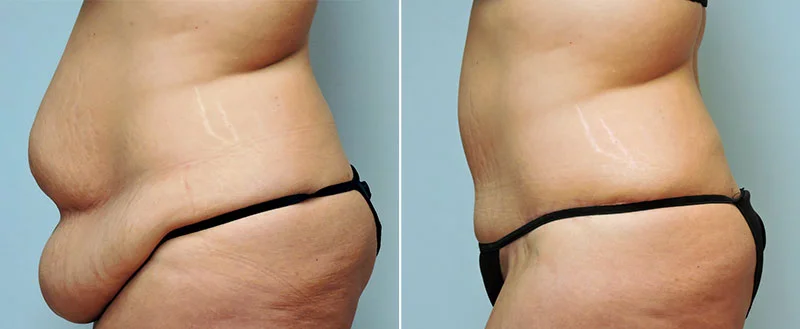
- What results can I expect from a tummy tuck?
- Am I a good candidate for a tummy tuck?
- How is the tummy tuck procedure performed?
- Tummy tuck recovery
- Does a tummy tuck leave visible scars?
- Combining body contouring procedures
- Tummy tuck vs. liposuction
What results can I expect?
Pregnancy, aging or weight fluctuations throughout life can cause abdominal muscles and skin to irreversibly stretch, leaving you with a protruding belly or sagging skin folds and stretch marks on the lower abdomen—issues which a healthy lifestyle can do little to address.
If you have not been in the shoes of a tummy tuck patient, you may not realize that a tummy tuck can improve comfort as much as appearance. Excess skin and loose abdominal muscles can make it difficult to find clothing that fits comfortably, particularly when it comes to jeans or fitted skirts. Sometimes, the abdominal muscles can stretch to the point where they weaken and separate vertically, leading to back pain and other problems.
Abdominoplasty can help correct these problems, along with giving you a more aesthetically pleasing abdominal shape.
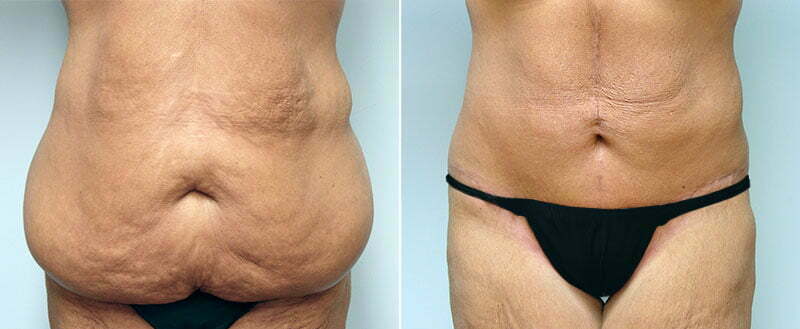
- Key Benefits
- Glossary
- Flatter Stomach: Abdominoplasty removes excess fat and skin, resulting in a flatter and more toned stomach area.
- Tightened Abdominal Muscles: A key component of abdominoplasty involves suturing separated abdominal muscles back together to create a firmer abdomen.
- Restores the Abdomen After Pregnancy and Weight Loss by removing excess skin and tightening the muscles.
- Hernia Correction: A tummy tuck can correct ventral hernias by repairing the abdominal wall, providing both cosmetic and health benefits.
- Lasting Results: With proper diet and exercise, the results of a tummy tuck can be long-lasting, maintaining a flatter abdomen over time.
- Abdominoplasty: A surgical procedure, also known as a tummy tuck, that removes excess fat and skin from the abdomen and tightens the abdominal muscles to create a smoother, firmer abdominal profile.
- Anesthesia: Medication used during surgery to prevent pain; can be either local (numbing a specific area) or general (inducing sleep).
- Diastasis Recti: A condition characterized by the separation of the abdominal muscles, which can be corrected during an abdominoplasty.
- Drainage Tubes: Tubes temporarily placed under the skin to drain excess fluid from the surgical site, often used after abdominoplasty to reduce swelling and prevent fluid accumulation.
- Incision: A surgical cut made in the skin; in abdominoplasty, this usually runs from hip to hip just above the pubic area and around the navel if necessary.
- Liposuction: A surgical technique used to remove fat; may be performed alongside abdominoplasty to contour the abdomen and waist.
- Mini-Abdominoplasty: A less extensive version of abdominoplasty that focuses on the lower abdomen, with smaller incisions and often without navel repositioning, suitable for patients with less excess skin.
- Panniculus: The excess skin and fat hanging down over the genitals and thighs, often targeted in abdominoplasty procedures.
- Recovery Time: The period post-surgery during which patients heal, commonly involving rest and limited physical activity, with specific care instructions for optimal healing.
- Scar: The mark left on the skin after surgical incision has healed; abdominoplasty scars are typically hidden below the bikini line.
- Skin Elasticity: The skin’s ability to stretch and return to its original state, which can affect the outcome of abdominoplasty, especially in terms of skin tightening.
Am I a good candidate?
In general, a tummy tuck may be recommended if you are experiencing the following:
- You are bothered by excess, hanging skin on your abdomen
- You have stretched, weakened abdominal muscles from pregnancy which protrude unnaturally (a condition called diastasis recti)
- Form-fitting clothing such as swimsuits and jeans are uncomfortable due to the shape of your belly
- Exercise and a healthy diet have not improved the shape of your abdomen to your satisfaction
- You are at a healthy, stable body weight and do not smoke
- You do not plan on becoming pregnant in the future
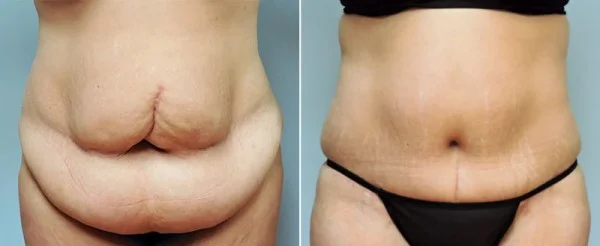 Patient Gallery » See Tummy Tuck results
Patient Gallery » See Tummy Tuck results
How is the abdominoplasty procedure performed?
Dr. Conway performs tummy tuck surgery in our private, on-site Asheville surgery suite, which is fully accredited by the AAAASF. Anesthesia is provided by a board certified MD anesthesiologist for your safety.
Dr. Conway will begin the procedure by making a horizontal incision between the hips, just above the pubic bone. For more extensive tummy tucks, a second incision may be made around the belly button. After loosening the overlying skin along the abdomen from the muscle, Dr. Conway will reshape the muscles into a tighter position, placing permanent sutures in the fascia (the layer of connective tissue over top of the muscle) to hold the muscles into their improved shape.
Next, Dr. Conway will remove excess skin and redrape the remaining skin over the stomach muscles, repositioning the belly button to maintain a natural appearance. All of this is done through the initial one or two incisions, which are then closed with sutures.
Dr. Conway’s Approach to Tummy Tuck Surgery

Dr. Donald Conway
Asheville board certified plastic surgeon Dr. Conway approaches tummy tuck surgery as both a restorative and aesthetic procedure, applying his artistic sensibility and using scar-minimizing surgical techniques for naturally attractive results and optimal recovery. He finds the abdominoplasty procedure to be particularly rewarding, as he is able to help patients feel happy with their bodies, sometimes for the first time in years.
Recovery
Most tummy tuck patients go home the same day as surgery, although more complex procedures may require an overnight stay in the hospital or our surgery center. Depending on the individual, drains may be placed to collect fluid that naturally migrates to the operated area. This is an off-putting idea for some, but drains can improve your comfort and help to accelerate recovery. Dr. Conway will give you instructions for care, and drains are typically removed 1-2 weeks after surgery.
Patients recovering from a tummy tuck typically experience the greatest discomfort during the first 2-3 days, and then start to feel noticeably better each day. Dr. Conway will prescribe pain medication to help you manage discomfort. You will be allowed to get up and walk around the house the day after surgery, but you may require assistance from a responsible adult at first. It is recommended that you have a spouse or other caretaker available at home for the first week to help you with basic tasks.
Light activities, including a return to sedentary work, can usually be resumed about 2 weeks after surgery. Any task involving lifting, bending, straining, or aerobic activity, including lifting small children, must be avoided for 6 weeks after a tummy tuck. Parents of small children should arrange for childcare prior to having a tummy tuck. Most tummy tuck patients begin a gradual return to their normal exercise routine about 6 weeks after surgery.
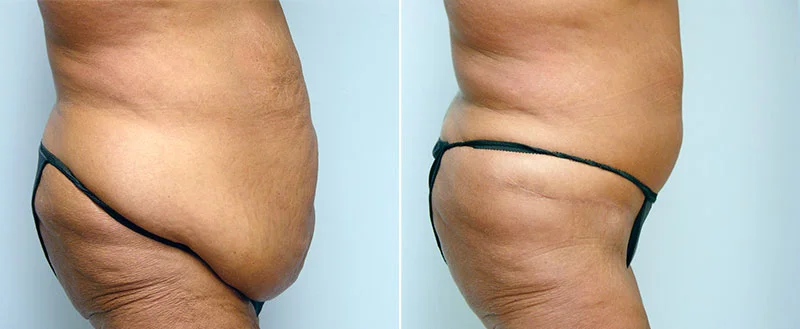
Does abdominoplasty leave visible scars?
Scars are unavoidable after abdominoplasty, so Dr. Conway takes great care to ensure scars are as thin and inconspicuous as possible by placing incisions very low on the abdomen, below the natural bikini line. With time and proper care, scars typically fade so they are more difficult to detect, even without clothing.
For very extensive tummy tucks, where a large amount of skin needs to be removed, a vertical scar is sometimes necessary. This is most commonly the case for abdominoplasty following massive weight loss. In Dr. Conway’s experience, however, these patients find that a visible scar is worth it to enjoy a life free from the burden of excess abdominal skin. You can see what you might expect from tummy tuck scarring by viewing our before and after tummy tuck patient gallery.
Combining Body Contouring Procedures
Tummy tucks can be performed on their own, but are also often combined with other body contouring procedures to further enhance the results and provide a more complete transformation. Some procedures often combined with abdominoplasty include:
Mommy Makeover
As the name implies, mommy makeover is a surgical procedure that addresses a variety of concerns that often result after pregnancy. A mommy makeover is a combination of multiple breast and body procedures — it typically includes breast enhancement, such as breast augmentation, breast lift, or even breast reduction, and body contouring procedures such as tummy tuck, mini tummy tuck, or liposuction. A mommy makeover can also include a couple of non-surgical skin care procedures and treatments such as Botox, anti-aging chemical peels, or laser skin resurfacing.
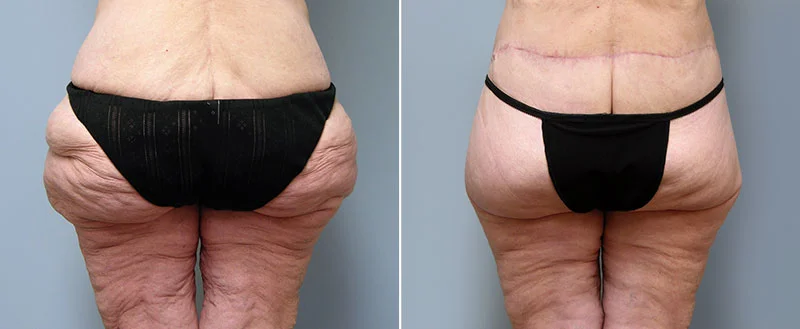
Thigh Lift
A thigh lift addresses loose, sagging tissue on the lower body to remove burdensome excess skin and lift underlying tissues into a more youthful, aesthetically pleasing position. Incisions for thigh lift or buttock lift procedures depend on the extent of surgery as well as how the sagging skin is distributed. Whenever possible, Dr. Conway places incisions within the natural folds of the body, so resulting scars will be as inconspicuous to others as possible.
Arm Lift
An upper arm lift (brachioplasty) eliminates loose excess skin (sometimes called “bat wings”) that hangs from the upper arms to restore a smoother, slimmer and firmer appearance to the arms.
Tummy Tuck vs. Liposuction for Body Contouring
Many patients are unsure which body contouring procedures they should choose just by the name alone. Both liposuction and abdominoplasty can significantly improve the shape of the midsection, but they are not interchangeable procedures.
Liposuction specifically targets excess fat, as it removes fat deposits beneath the skin to create a leaner, more attractive body shape. Since liposuction will do nothing to address sagging skin or protruding musculature, it is best suited to patients who have good skin elasticity and who do not present significant loss of muscle tone.
A tummy tuck addresses problem areas that liposuction cannot. While abdominoplasty will not remove a significant amount of fat, it is the most effective surgery for restoring muscle tone and removing excess, sagging skin and helping to reduce abdominal stretch marks.
When appropriate, liposuction and a tummy tuck can be combined for an enhanced improvement in body contours.
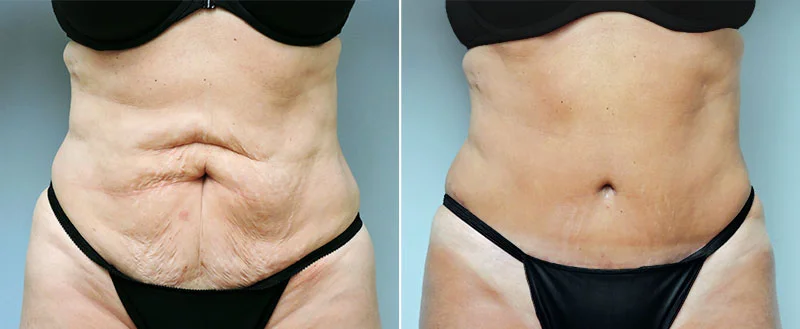
To receive personalized advice, schedule your tummy tuck consultation with board certified Asheville plastic surgeon Dr. Donald Conway by calling (828) 210-9333 or reaching out online. With over 20 years of experience, Dr. Conway will be happy to help you understand what results you might expect from tummy tuck surgery. He will help you consider all of your options so you can decide what procedure is best suited to your cosmetic goals and needs. In addition to tummy tucks, Dr. Conway performs a variety of cosmetic and reconstructive procedures for men and women, including breast augmentation with implants, breast lift, breast reduction, male breast reduction, liposuction, post weight loss body lift, cheek and chin implants, rhinoplasty, neck lift, brow lift, and facelift.
References »
Regan JP, Casaubon JT. Abdominoplasty. [Updated 2023 Jul 24]. In: StatPearls [Internet]. Treasure Island (FL): StatPearls Publishing; 2024 Jan-. Available from: https://www.ncbi.nlm.nih.gov/books/NBK431058/
Swanson E. Prospective clinical study of 551 cases of liposuction and abdominoplasty performed individually and in combination. Plast Reconstr Surg Glob Open. 2013 Sep 10;1(5):e32. doi: 10.1097/GOX.0b013e3182a333d7. PMID: 25289226; PMCID: PMC4174197.
American Society of Plastic Surgeons. Tummy Tuck: Abdominoplasty (https://www.plasticsurgery.org/cosmetic-procedures/tummy-tuck). Last reviewed 2022. Accessed 7/30/2024.
Matarasso A, Swift RW, Rankin M. Abdominoplasty and abdominal contour surgery: a national plastic surgery survey. Plastic and Reconstructive Surgery. 2006. doi: 10.1097/01.prs.0000209918.55752.f3.
Cleveland Clinic. Diastasis Recti (Abdominal Separation): Symptoms & Treatment. Last reviewed 02/08/2022. Accessed 07/30/2024.
Taylor DA, Merten SL, Sandercoe GD, Gahankari D, Ingram SB, Moncrieff NJ, Ho K, Sellars GD, Magnusson MR. Abdominoplasty Improves Low Back Pain and Urinary Incontinence. Plast Reconstr Surg. 2018 Mar;141(3):637-645. doi: 10.1097/PRS.0000000000004100. PMID: 29481394.

